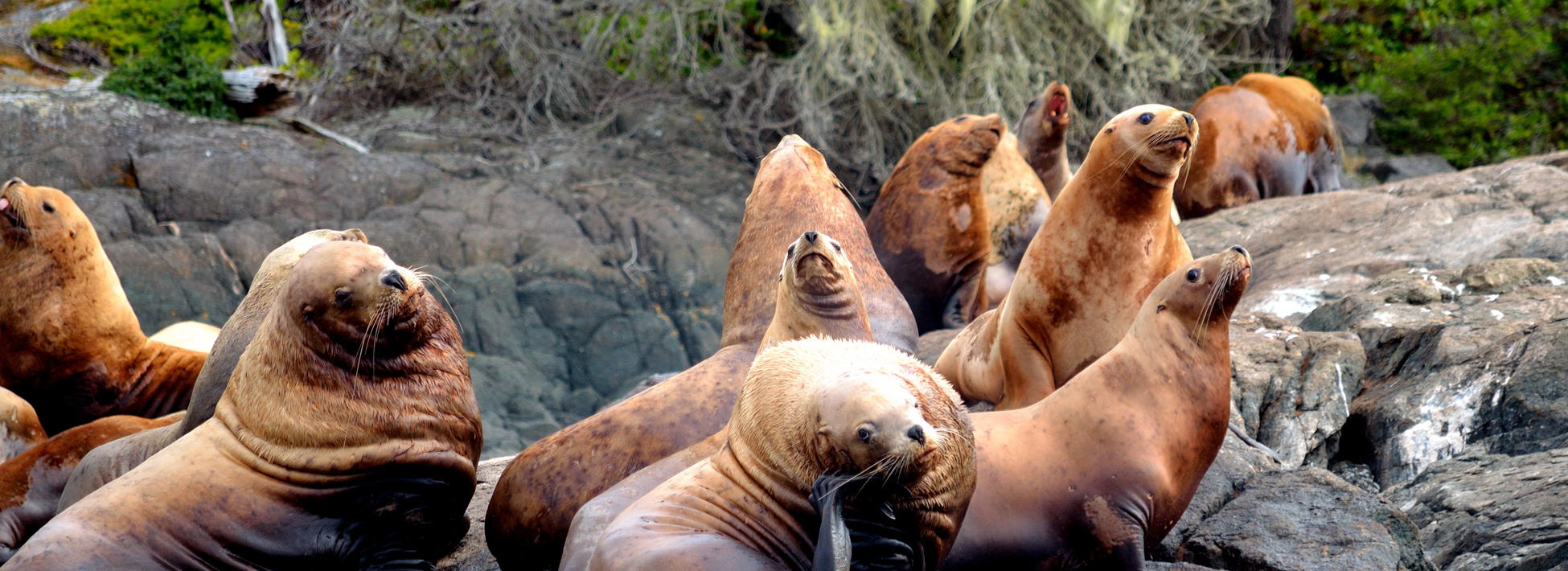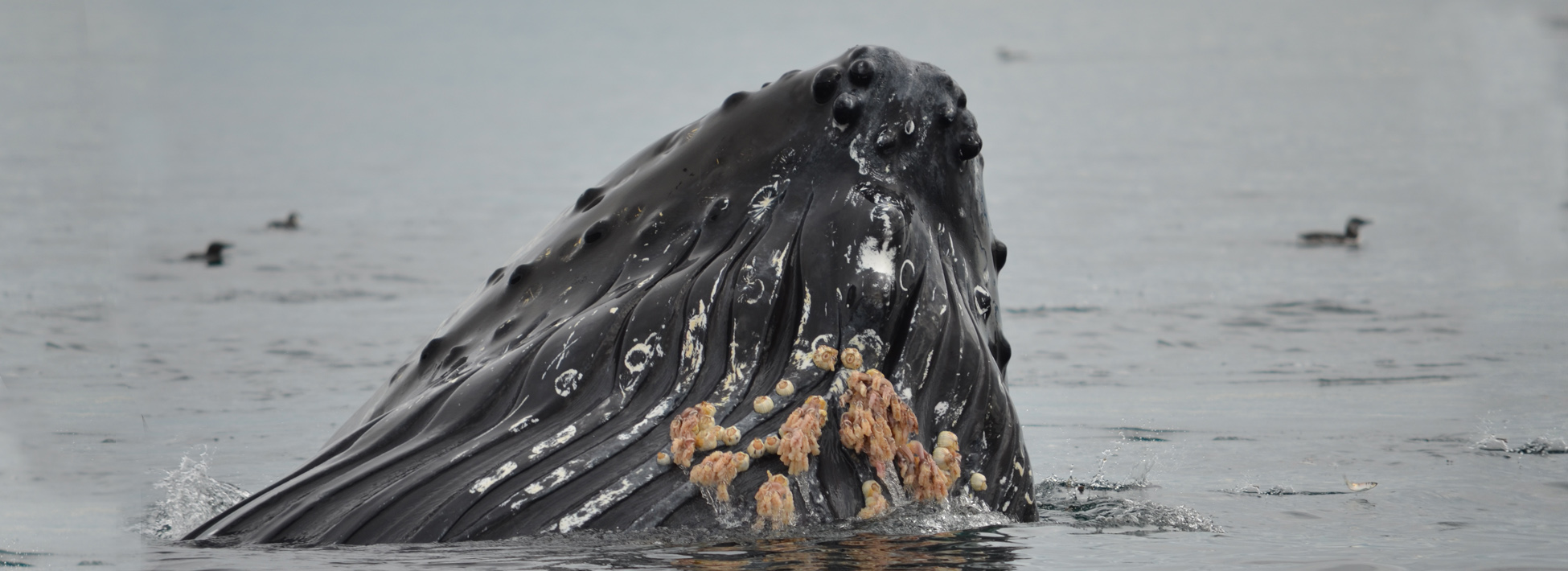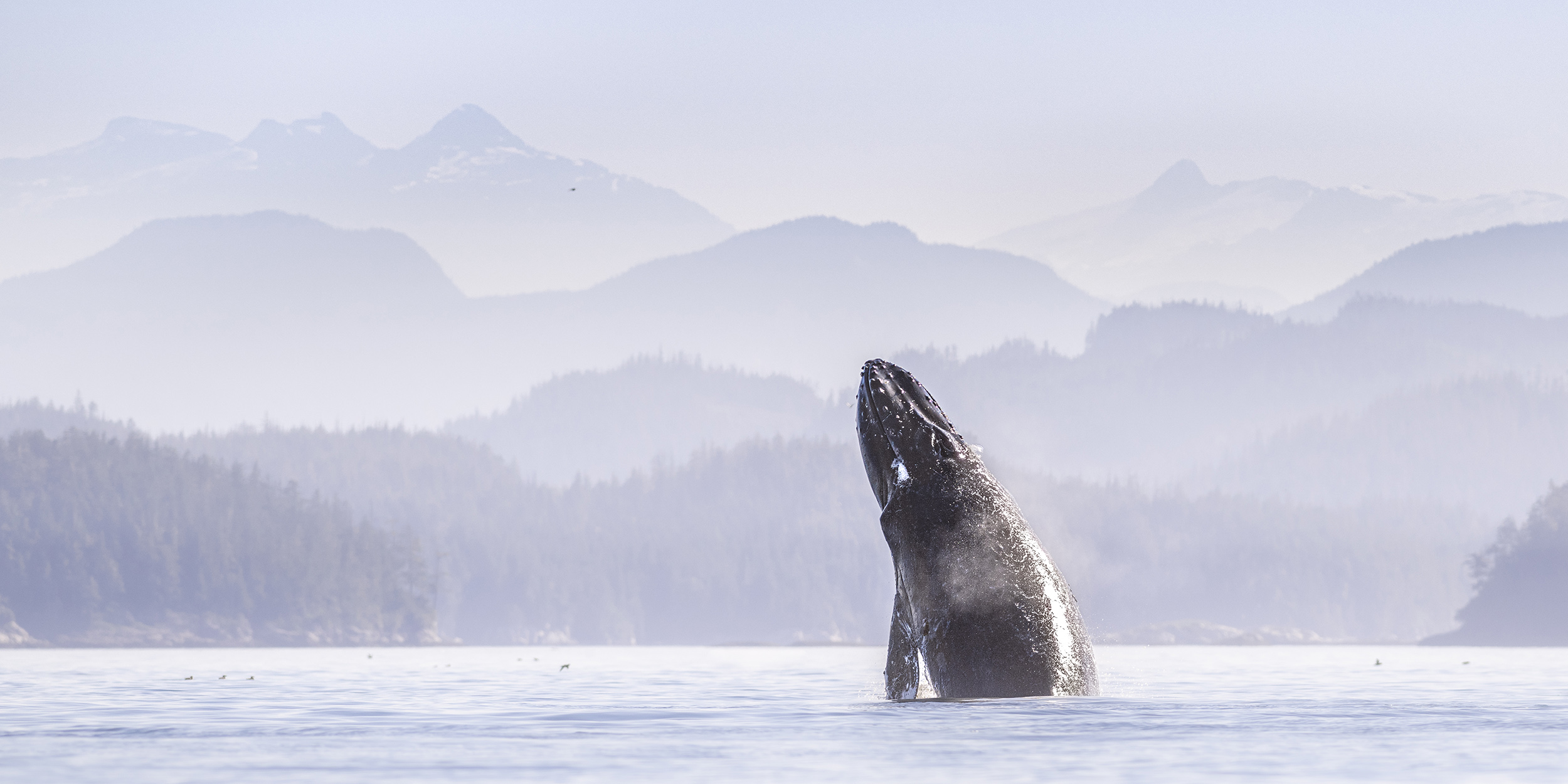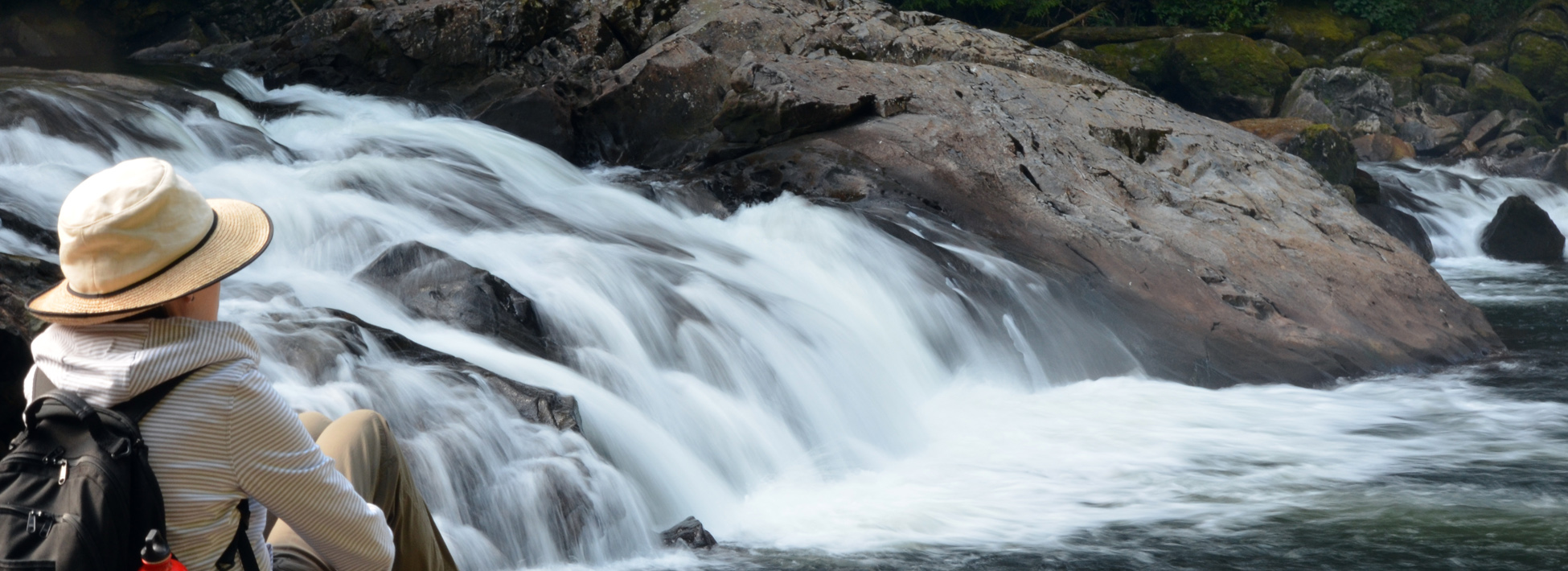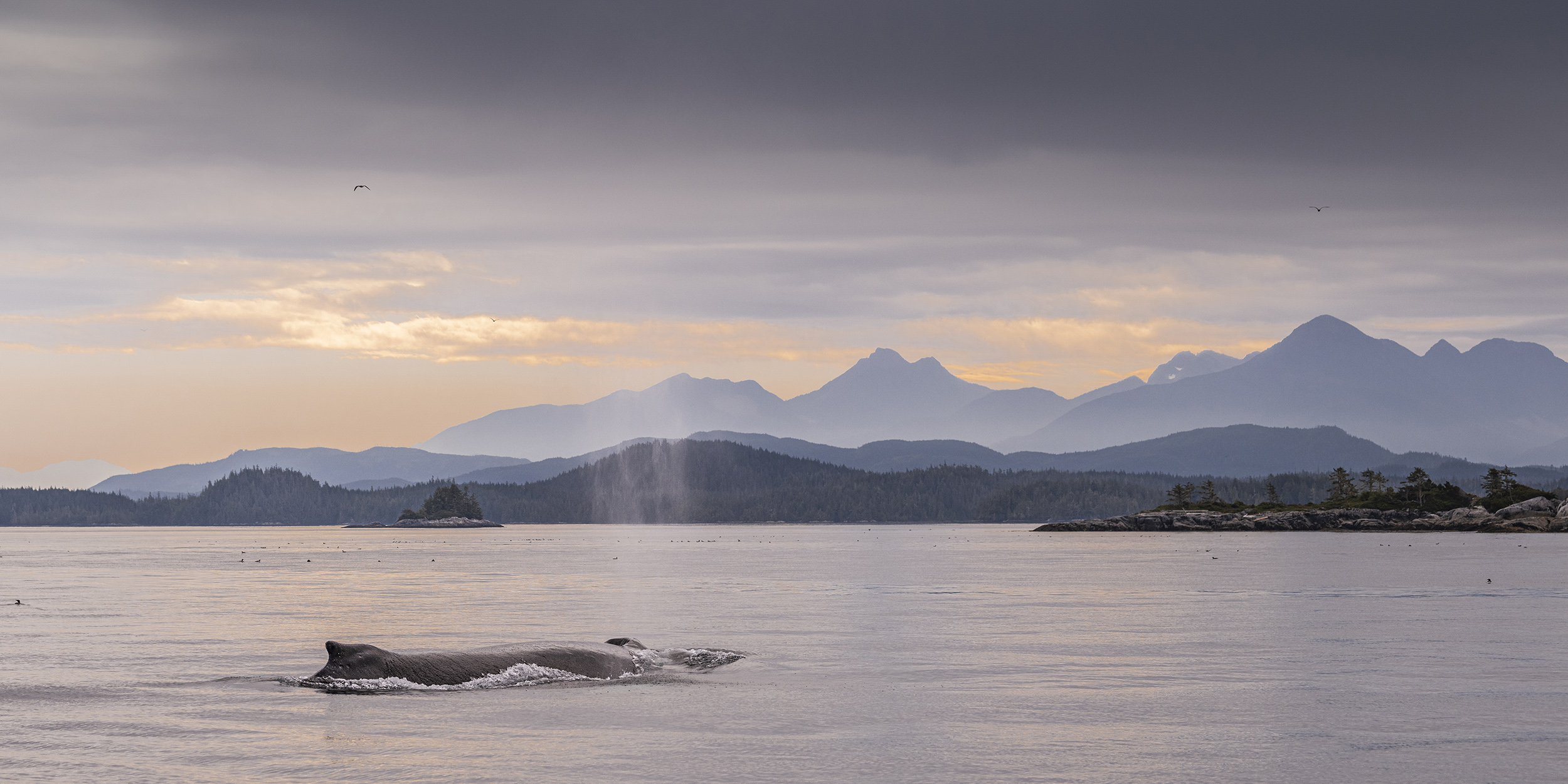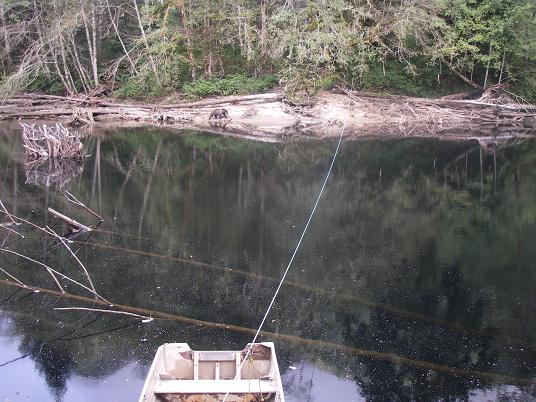As this photo shows the rope is part of a pulley system used to cross the river to get to Trapper’s cabin. It is not a good idea to cross a river to confront a grizzly so we waited for about fifteen minutes while the bear worked its way along the shore. About 60 meters (200 feet) past the rope it swam across the river to our side so we got in the boat and crossed the river and took the fifteen minute walk to the cabin.
Bald Eagles

Bald Eagles are frequently sighted in our area. At times they can be seen in large numbers. This is usually where food supplies are high. For example this could be in areas with high concentrations of baitfish or along the rivers in the fall when the salmon are spawning. They are not migratory, but do move around with the food supply. As mentioned earlier when the salmon are spawning we often see many along the rivers, while there will be fewer along the coastline. With little need for camouflage their white head and tail feathers can be spotted easily. The female is slightly larger and her white head extends down a bit farther onto the body, but it is subtle. It takes these birds 4.5 – 5 years to acquire this unique plumage. As juveniles they are a brown colour. With exceptional eyesight and the ability to view 270 degrees they are understandably often seen in high perches and in trees near points and passageways.
Visit our Blog